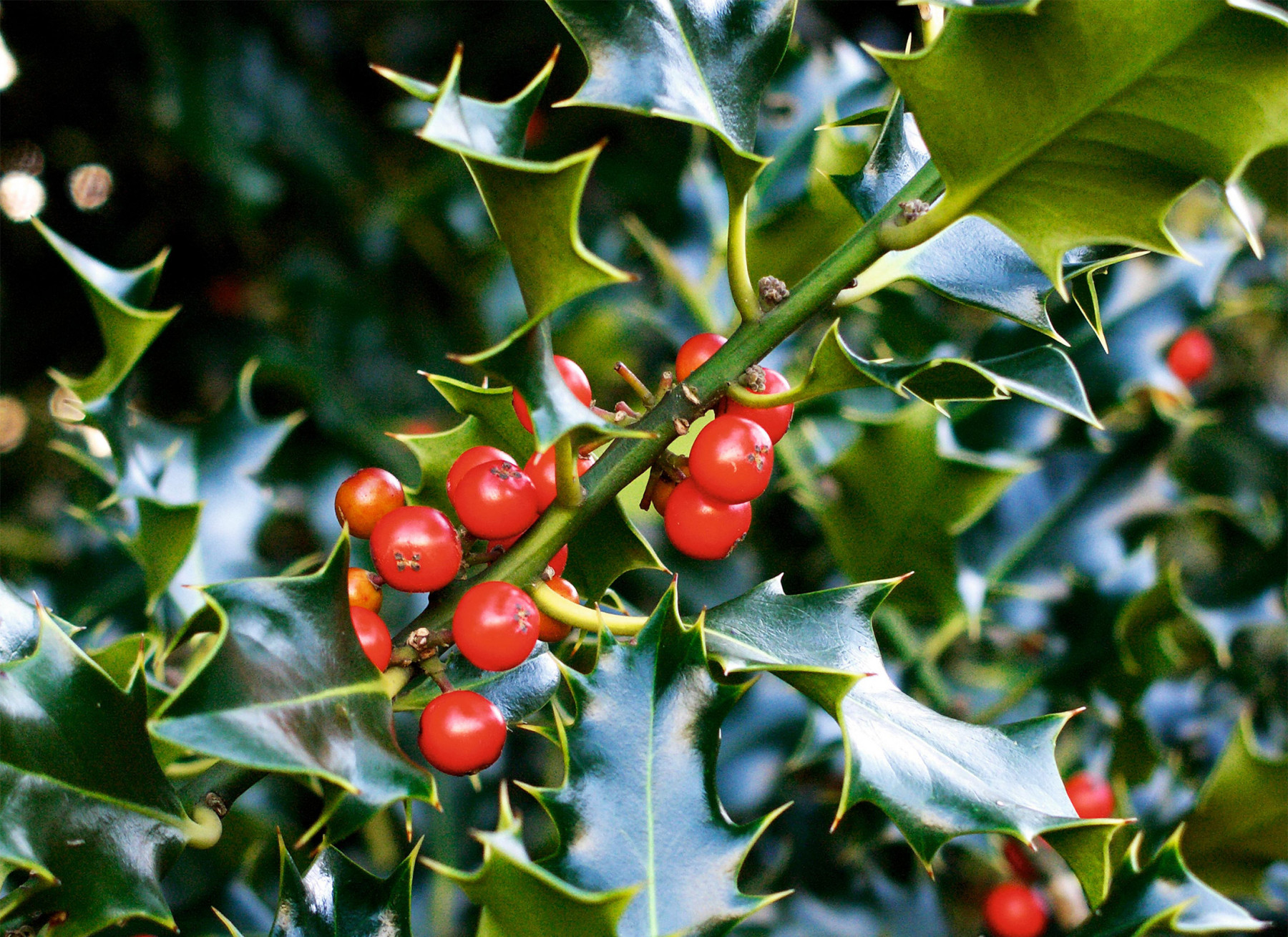
There’s a very good reason why winter evergreens were so important in festive celebrations. They represented eternal life
As winter sets in our gardens rely on the structure and skeleton of trees, shrubs and winter evergreens. While the wonder of the autumnal hues is spectacular there is something very graceful about the winter garden. I love the winter light, the morning sun breaking through on the horizon and lighting up the garden. But the winter evergreens add texture and the comfort of rich greens to the overall effect.
For the ancients, evergreens represented eternal life; these plants kept their foliage right through the winter and didn’t die back or become bare branches. As the days got shorter and shorter the evergreens provided hope that life did and would go on. The winter solstice celebrations revolved around light, it’s the turn of the year when the sun is reborn and the light returns. An extra sliver of daylight follows the longest night as the days lengthen and the light returns. It must have been such a relief when there was no electricity or solar panels or other means to illuminate their world. And so the evergreens were equally magical and important. Some had intrinsic values of magical qualities; others were food plants needed for sustenance and flavour.
But evergreen plants also provide shelter for wildlife, safer roosting sites for birds and some extra insulation against the coldest nights. Some evergreens, like a cloak of ivy can also provide extra insulation for a home, a garage or even a shed.
Holly

Not only is holly a very garden worthy plant to grow it has many other attributes. The leaves and berries can be used for natural decorations and door wreaths for Christmas. Its berries are food for wildlife. It can be trimmed and trained into a wall shrub, feature plant or even a topiary shape and can be grown as an impenetrable hedge to deter burglars. But did you know that a holly bush near the house is supposed to deter evil influences, thunder and lightening?
At Christmas the holly berries are a fabulous splash of red in door wreaths and decorations. If you are choosing a new plant then opt for a prickle free variety that bears plenty of berries like the self-fertile female variety Ilex aquifolium ‘JC Van Tol’, safer around pets and children. But for the rich blue green holly foliage choose Ilex x merserveae ‘Blue Princess’ is a gorgeous plant with blood red berries.
Ivy

Ivy is a really fantastic plant. It clambers and climbs making perfect cover for all sorts of places in the garden. Back in Roman times Hedera helix ‘Poetica’ was widely grown. It was said to be sacred to Bacchus the god of wine and was displayed outside taverns when the latest brew was ready.
Wild ivy (Hedera helix) is a very important plant for pollinators, with its autumn flowers rich in nectar. It’s also a good choice for festive decorations, especially when the black berries form, but do leave some for the birds.
Holly and ivy
Traditionally at Christmas we mix together holly and ivy foliage to create natural decorations. When making festive decorations like a festive door wreath make sure you balance the quantities of holly and ivy.
Ivy along with holly is associated with the roman festival of Saturnalia, which coincided with the winter solstice. Other earth based traditions considered these plants to be representative of the balance of nature where ivy was the female aspect and the holly, the male counterpart. Both are used to decorate the home at Christmas and advocates of this belief use equal quantities of holly and ivy in their displays to ensure harmony and balance in the home.
Edible evergreens
But it’s not just their decorative qualities that make winter evergreens indispensible. Some are edible or can be used in winter menus. Bay laurel (Laurus nobilis) is a very fragrant evergreen. You can dry them and then use to flavour stews and casseroles. I’ve even used them to flavour egg custards. Rosemary is a favourite evergreen herb that is fabulous in breads, pizza, and tomato sauces. And then there’s sage, partner with onion for your festive stuffing, add it to pizza, pasta sauces or bread for a rich, herby flavour.


